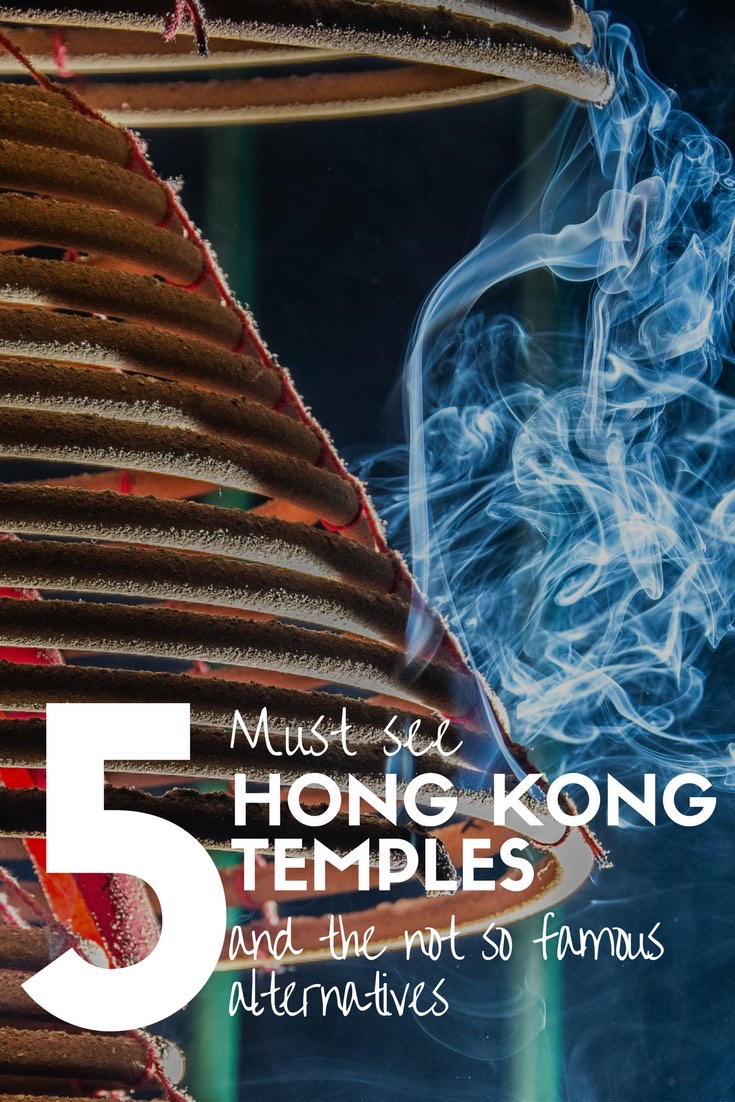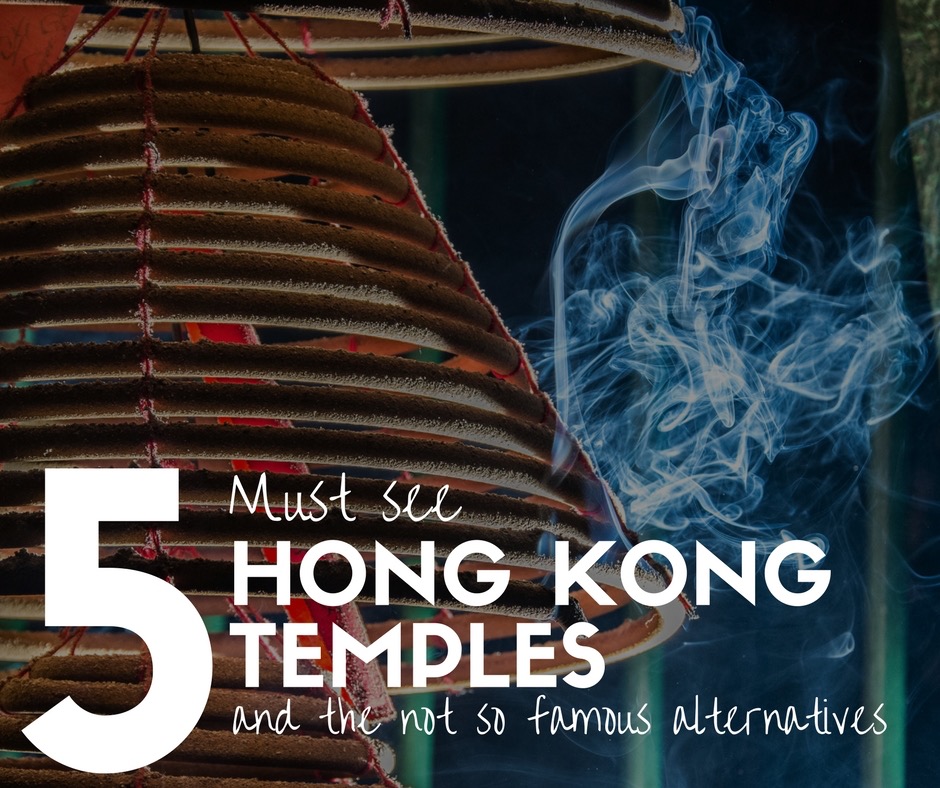
You should definitely schedule a visit to at least one temple, monastery or shrine during your visit to Hong Kong. You won’t have to try hard! Often it seems there is a temple on every corner and some you will stumble upon without even trying.
| You’ve heard of… | Why not visit the… |
| The Tan Tian Big Buddha and Po Lin Monastery – Lantau Island | Tze Shan Monastery and the Big Guan Yin – Tai Po |
| Chi Lin Nunnery and Nan Lian Gardens – Diamond Hill | Wong Tai Sin Temple – Wong Tai Sin |
| Man Mo Temple – Sheung Wan | Pak Shing Temple – Tai Ping Shan |
| 10,000 Buddha’s Monastery – Sha Tin | Che Kung Temple – Sha Tin |
| Tin Hau Temple – Stanley | Pak Tai Temple – Stanley |
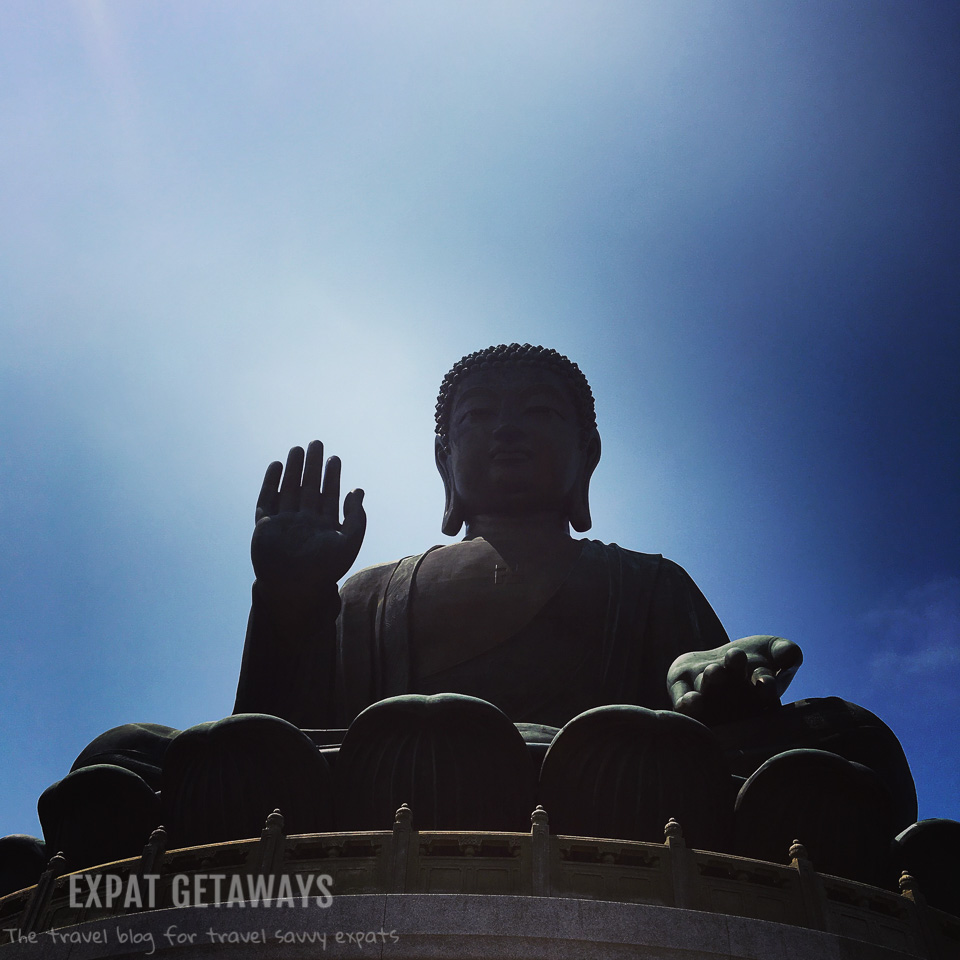
You’ve heard of the Tan Tian Big Buddha and Po Lin Monastery
Sitting 34 metres tall the giant bronze Tan Tain Buddha faces north to watch over the people of mainland China. On a clear day they say you can see it all the way from Macau!
It was only built in 1993 after monks from the adjacent Po Lin Monastery visited Japan and Taiwan. Upon seeing other big Buddhas, they decided that Hong Kong should have one too!
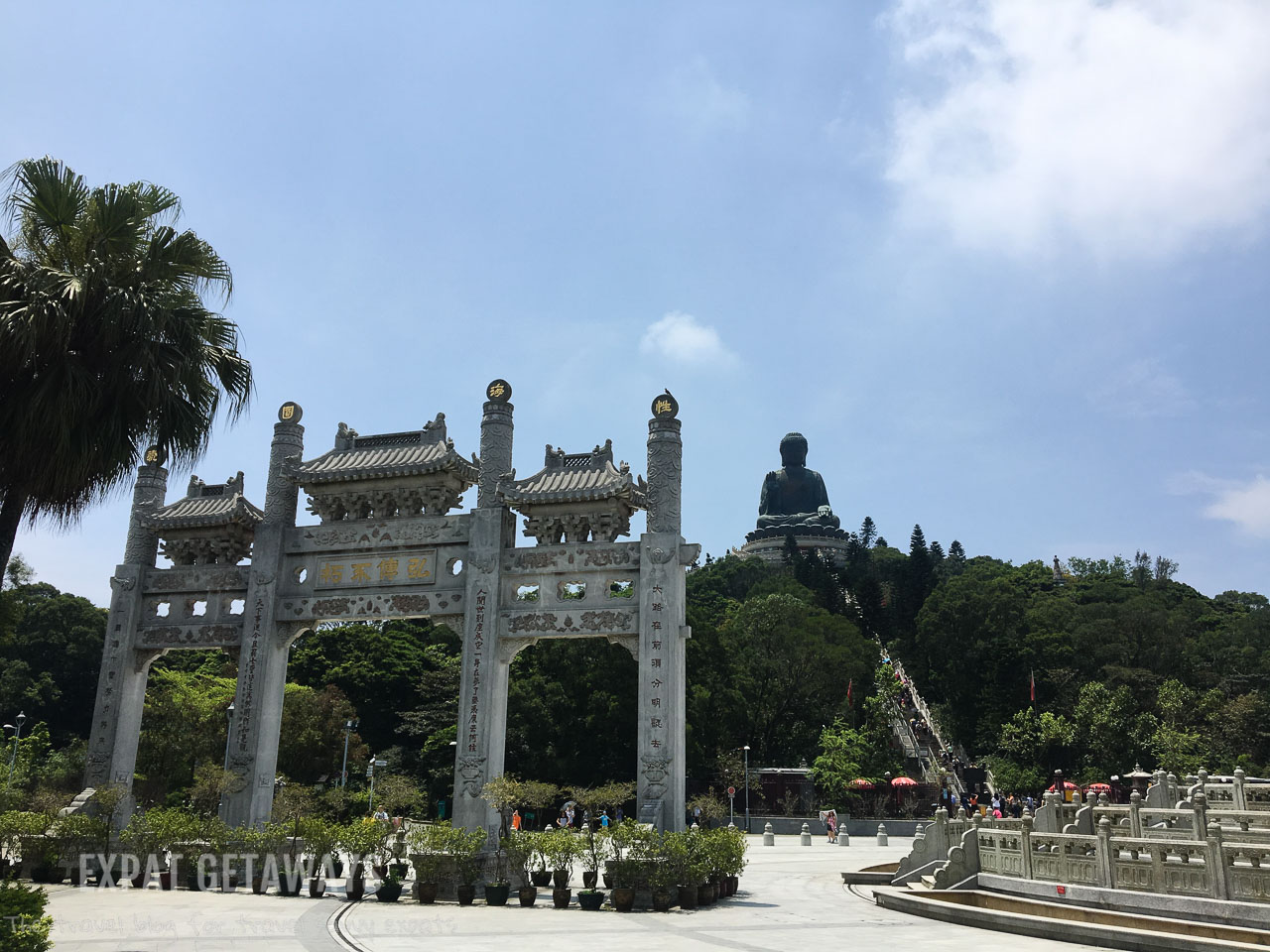
Next door is the Po Lin (precious lotus) Monastery. Back in 1906 three monks visited Lantau Island and set up their Big Thatched Hut to worship and practice Buddhism. Now visitors can take in the beautiful worship hall, hall of 10,000 Buddhas and enjoy a tasty vegetarian lunch at the onsite restaurant.
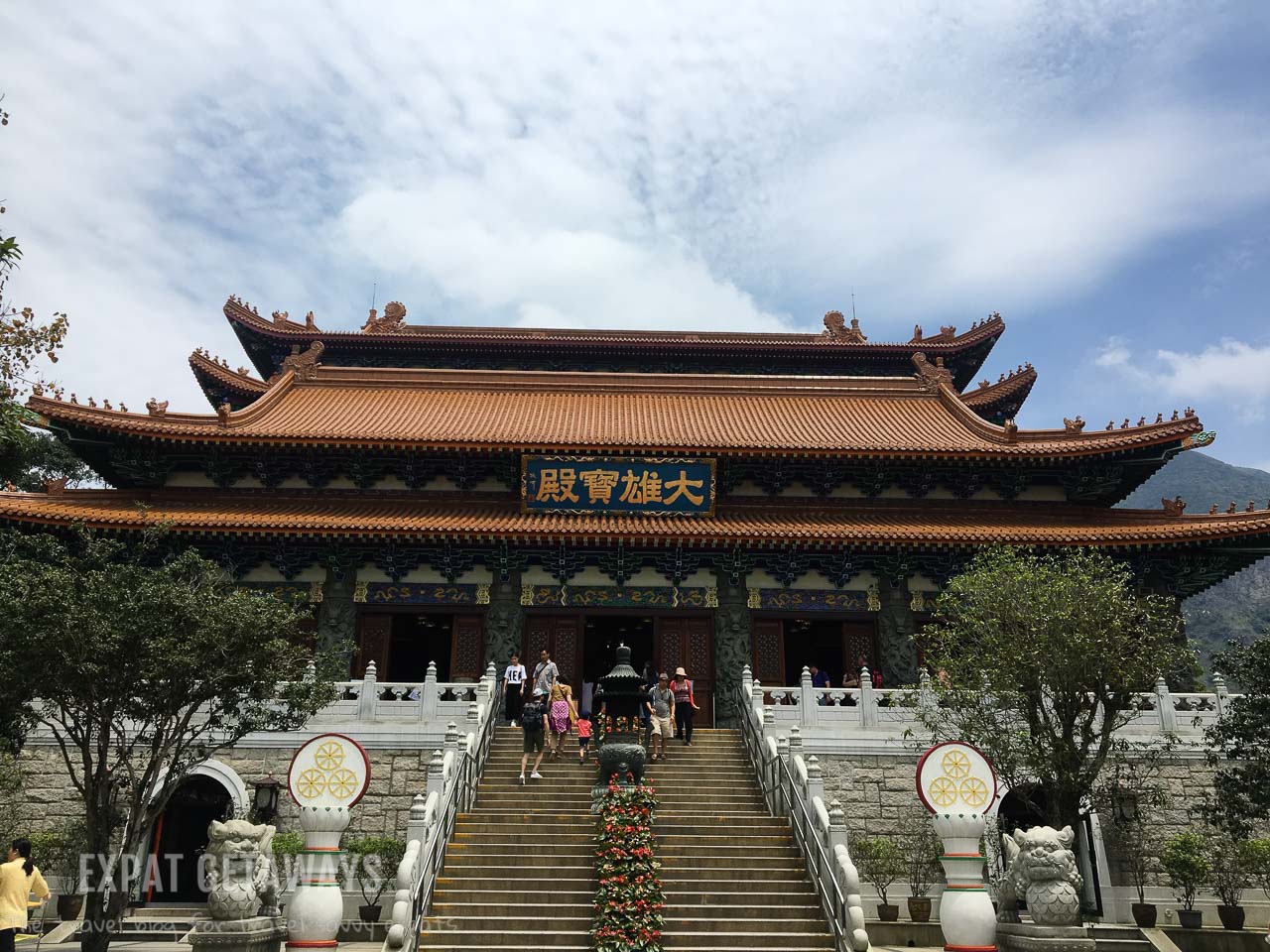
Ngong Ping 360
So this has no relation to religion at all, but it is the most common way for tourists to reach the Tan Tian Buddha. The cable car starts in Tung Chung and stretches 5.7 km over Lantau Island. On a clear day you are rewarded with spectacular views of the airport, Pearl River Delta and the lush forest covered mountains of Lantau Island. If you are making the effort to visit the Big Buddha, do as the tourists do and take the cable car. The views are absolutely worth it. Top tip- buy your tickets online and arrive at the ticket office 15minutes before opening to avoid the queues.
Why not visit the Tsz Shan Monastery – The Big Guan Yin instead?
Up in the New Territories, past Tai Po you will find the new Big Buddha, or rather the big Guan Yin. She is the Goddess of Mercy and stands at 76 metres tall! It is unlikely that you’ll read about the Tsz Monastery in many of the guide books. It is so new and there are terms and conditions to your visit which highlight that the primary purpose of the monastery is for the spiritual practice and promotion of Buddhism.
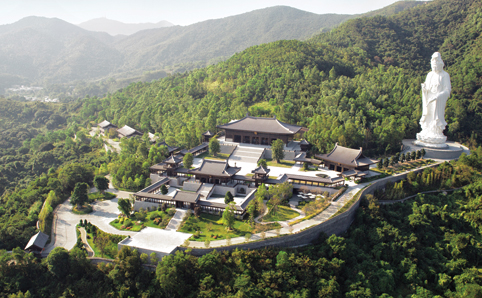
The monastery opened in April 2015 with $HK1.5 billion in funding provided by Hong Kong’s richest man Li Ka-shing. It is a serene place, away from the tourist crowds. Tour groups are banned altogether along with food, chewing gum and incense. Only 400 visitors are allowed in each day and they must follow strict guidelines. Book in advance and follow the rules.
88 Universal Gate Road
Tai Po, New Territories
You’ve heard of the Chi Lin Nunnery & Nan Lian Garden
The Chi Lin Nunnery is a striking oasis surrounded by high-rises. The timber structure is held together without a single nail. There are lotus ponds, bonsai trees and plenty of areas to quietly reflect.
Just next door are the peaceful Nan Lian Gardens. While they are quite new, they are modeled on Tang dynasty gardens from 618-907 AD.
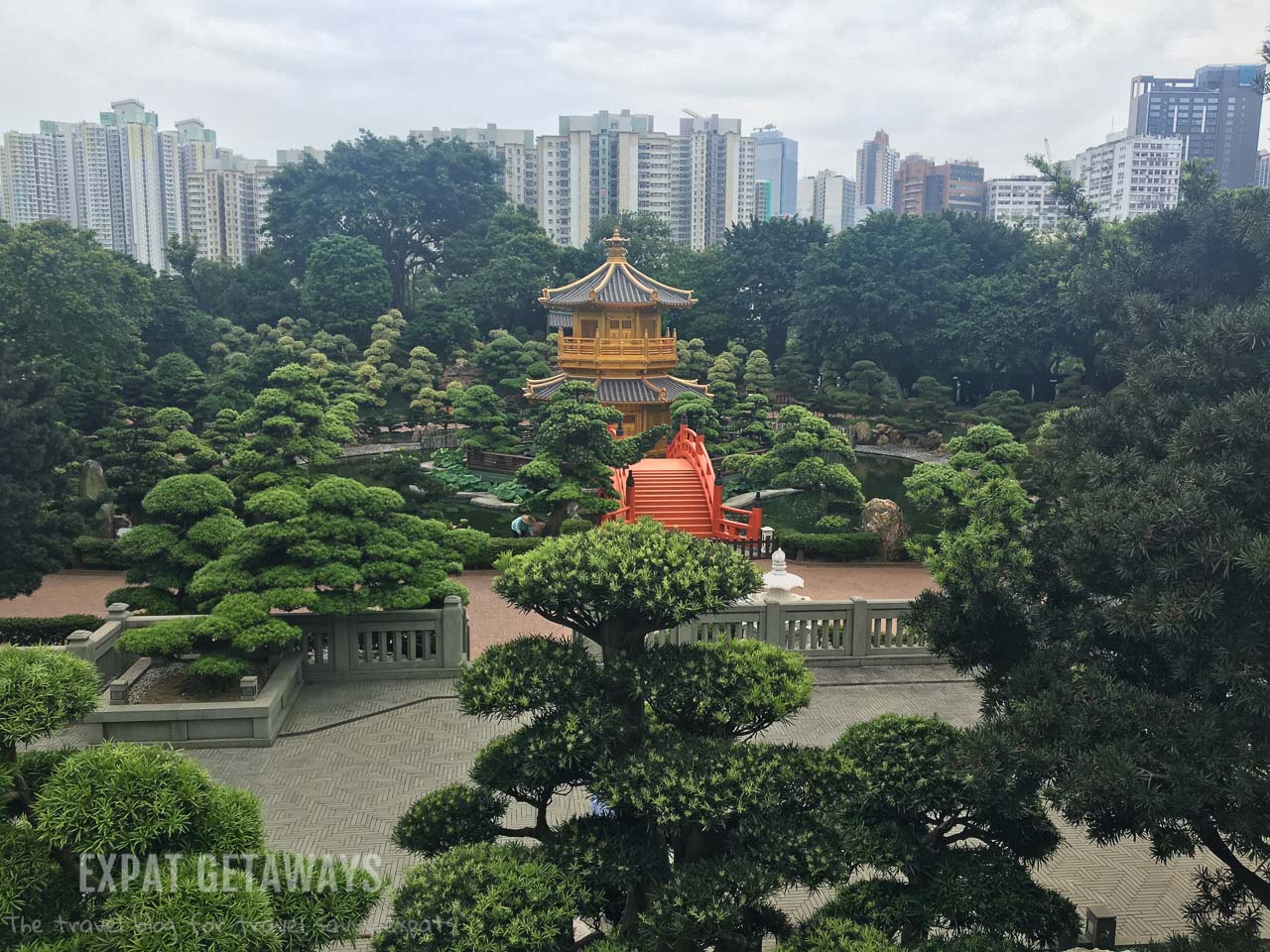
Don’t miss the wonderful restaurant – Chi Lin Vegetarian. You are served up delicious vegetarian food and take in the view from behind a waterfall. Make sure to ring and book a table in advance to avoid disappointment.
Chi Lin Nunnery and Nan Lian Gardens
Exit C1 Diamond Hill MTR (green line)
Why not combine with a visit to Wong Tai Sin Temple?
One stop away from the Chi Lin Nunnery on the MTR is Wong Tai Sin, home to the Wong Tai Sin temple.
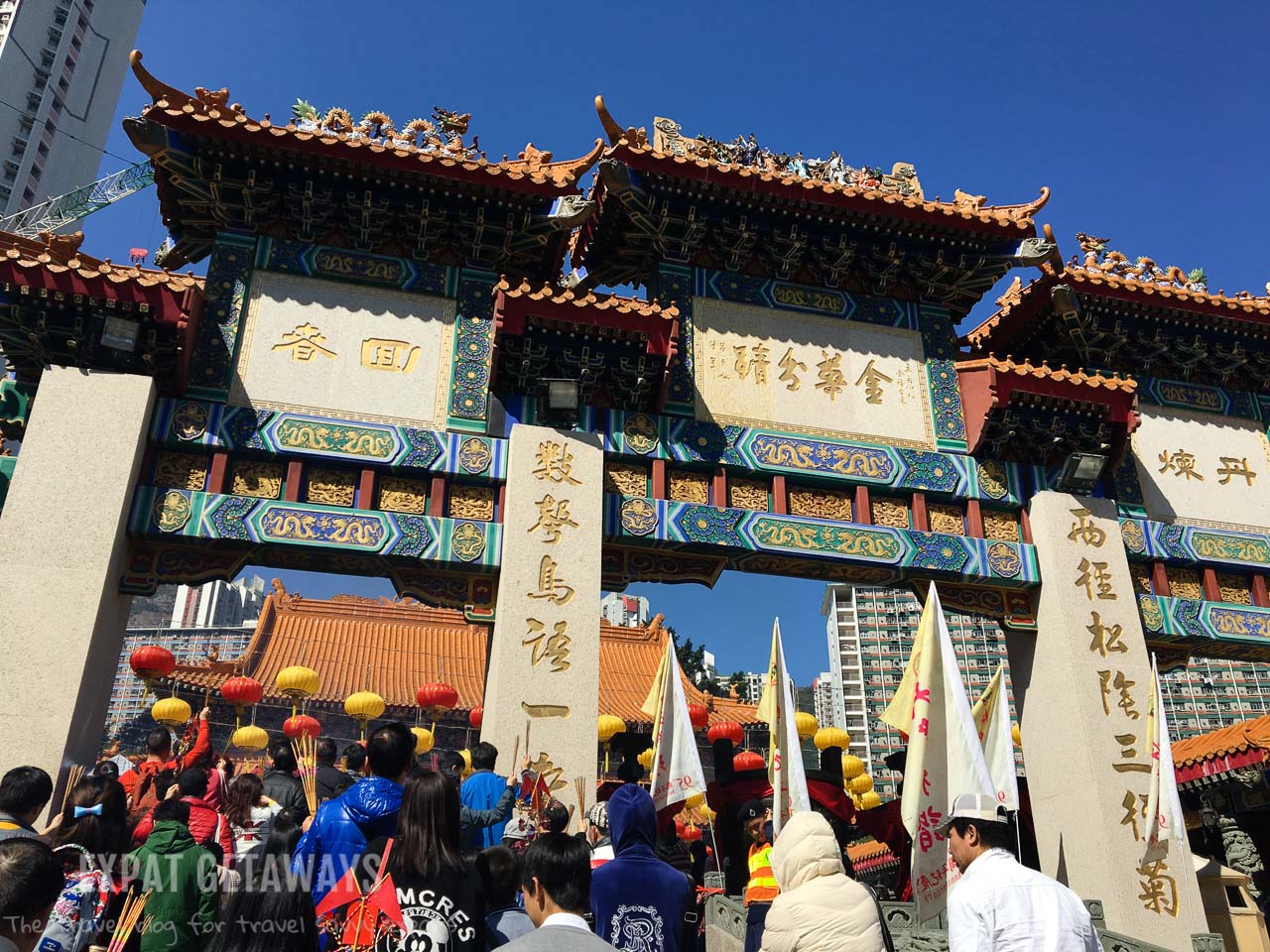
Wong Tai Sin was a real person back in the 4th Century. Wong Chu Ping was a poor shepherd boy who discovered he had the magical power to turn white rocks into sheep – very handy when you are a shepherd! After 40 years he achieved divine enlightenment and became immortalised as Wong Tai Sin, the Great Immortal Wong. His special power? Granting any wish! Could definitely explain his popularity.
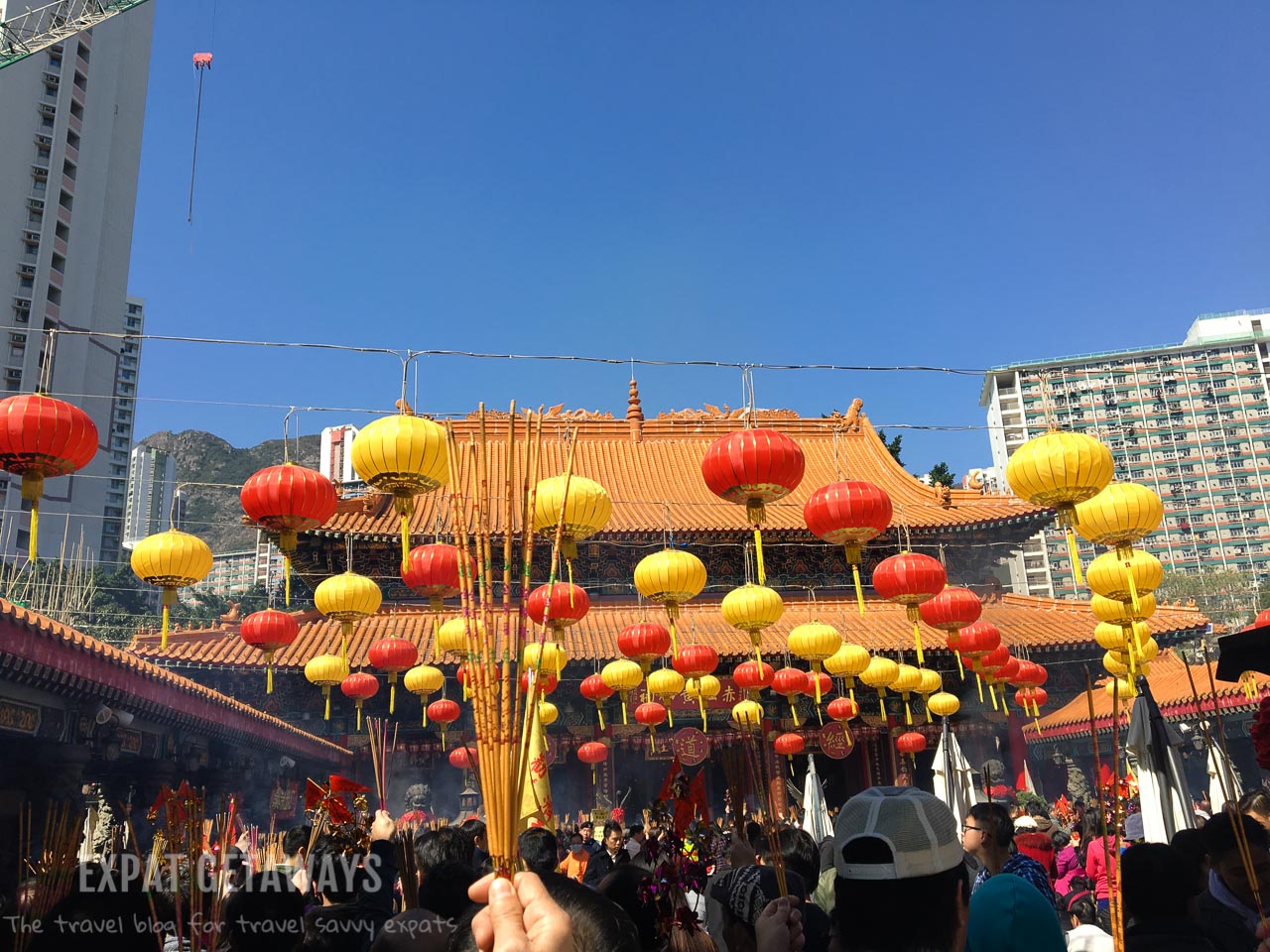
The complex is grand and ornate with displays of Buddhism, Taoism, Confucionism, feng shui and the Chinese zodiac. The fortune telling here is very accurate and worshippers flock here for Chinese New Year. I certainly hope it is accurate! Apparently I’m going to live past ninety! She did also tell me I need to be nicer to my husband though… hmm.
If you only visit one temple in Hong Kong, this is the one to go to.
Wong Tai Sin Temple
Exit B2 Wong Tai Sin MTR (green line)
Man Mo Temple is in all the photographs…
This temple should be on every tourists list. Man Mo is dedicated to the Gods of Literature (Man) and War (Mo).
You will often see worshippers leaving offerings, shaking fortune sticks and lighting incense. The most dramatic and photogenic part of the temple is the huge incense coils hanging from the ceiling.
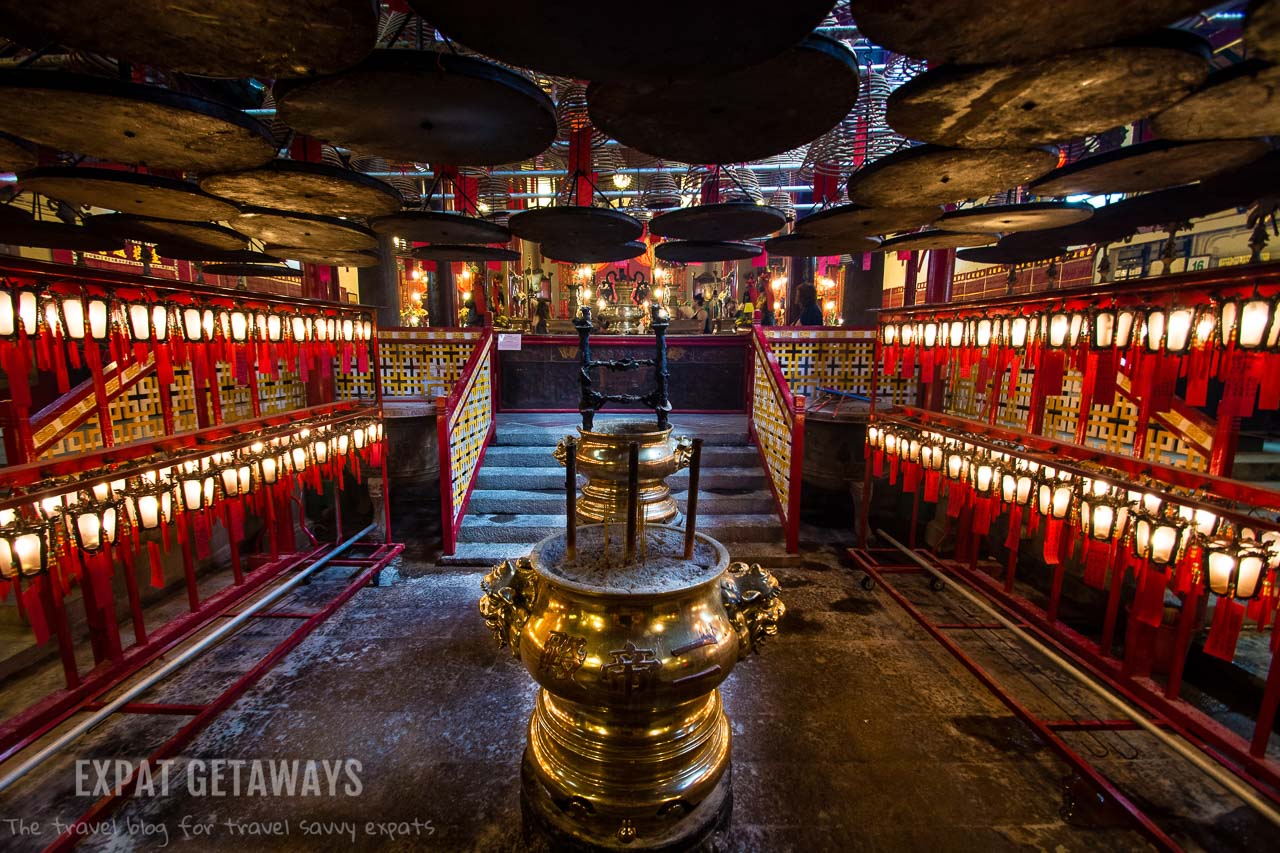
It is smokey here! There is an incinerator at the front of the building where paper offerings are burned and as you enter you are engulfed with incense smoke from the giant coils hanging from the ceiling.
The temple’s convenient location on Hollywood Road in Sheung Wan means that you will probably stumble across this one by accident even if you don’t go searching!
Man Mo Temple
124-126 Hollywood Road, Sheung Wan
But just around the corner is the Pak Shing Temple of a Hundred Surnames
Just like nearby Man Mo this temple has beautiful incense coils hanging from its ceiling. The notable difference is the lack of tourists and the spooky past.
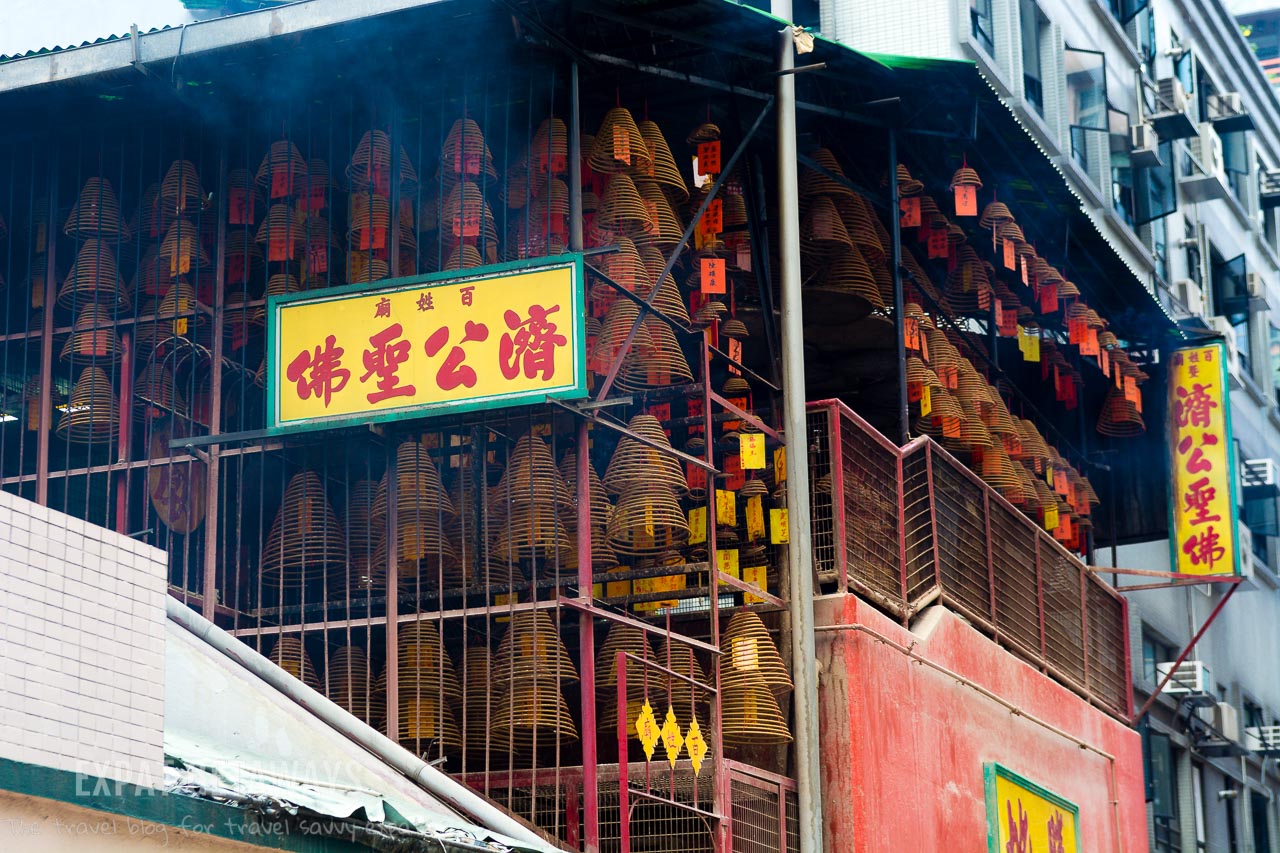
After the British took possession in 1841 Chinese people started flocking to the city from all over the Pearl River Delta. The opportunity to make money attracted them to work in the new colony. Many came with the plan to make their cash and retire to a nice comfortable life back in their villages. That was all fine and dandy until the bubonic plague broke out in 1894.
So what does this have to do with a temple?
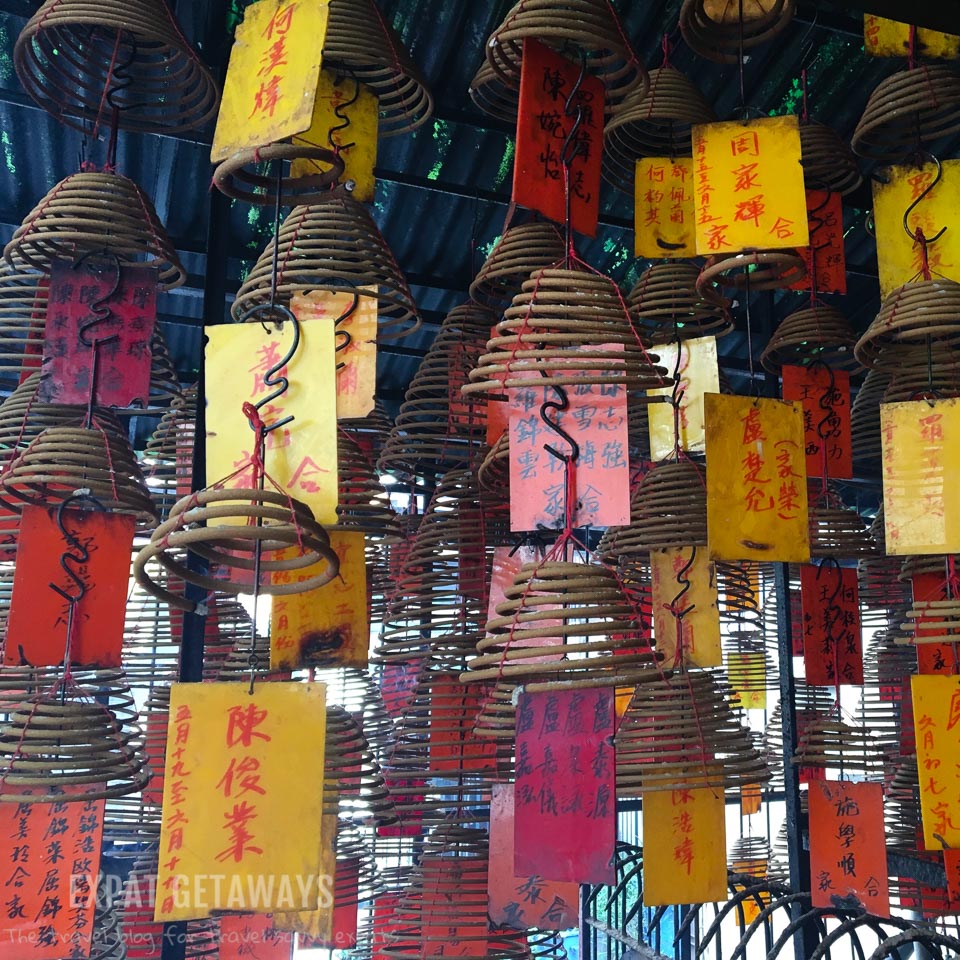
The Chinese believe you will roam the earth as a hungry ghost unless your ancestral tablet is written. Nobody wants that! The people in this neighbourhood were far from home and away from their family. The “Temple of a Hundred Surnames” was where the dying could find refuge, have ancestral tablets created and be sent to the afterlife in peace. Inside the temple there is a little room off to the left where you can still see these tablets lining the walls.
Pak Shing Temple
42 Tai Ping Shan Street
For more things to see and do near the Man Mo and Pak Shing Temple be sure to visit Explore Hong Kong’s Western District.
You’ve heard of the 10,000 Buddha’s Monastery
Man Fat Tsz or 10,000 Buddha’s Monastery is a quirky stop on your religious pilgrimage around Hong Kong. It is not old, even by Hong Kong standards. In 1933 the poet and philosopher Yuet Kai moved to Hong Kong to preach Buddhism. He gained quite the following and n 1949 decided to build his own monastery.
After his death Yuet Kai was buried for 8 months, then exhumed, embalmed, seated in the lotus position and covered with gold leaf and robes. You can still see him in a glass case seated at the front of the main alter.
The main attraction here is of course the 10,000 Buddhas. Miniature gold Buddha statues lining the path to the monastery, at the main entrance and inside the halls.
Fun fact- there aren’t actually 10,000 Buddhas… there’s closer to 13,000!
Why not stop by the Che Kung Temple while you’re in the area
Like Wong Tai Sin, Che Kung was also a real person once upon a time. He was a legendary general who helped the last Song dynasty emperor escape from the invading Mongols in 1276 to what is now the New Territories of Hong Kong. He has been worshipped ever since.
Around 300 years ago an epidemic was sweeping through villages around Sha Tin. Che Kung eradicated disease wherever he went so the locals built a temple in his honour. Miraculously the epidemic subsided the day construction was finished.
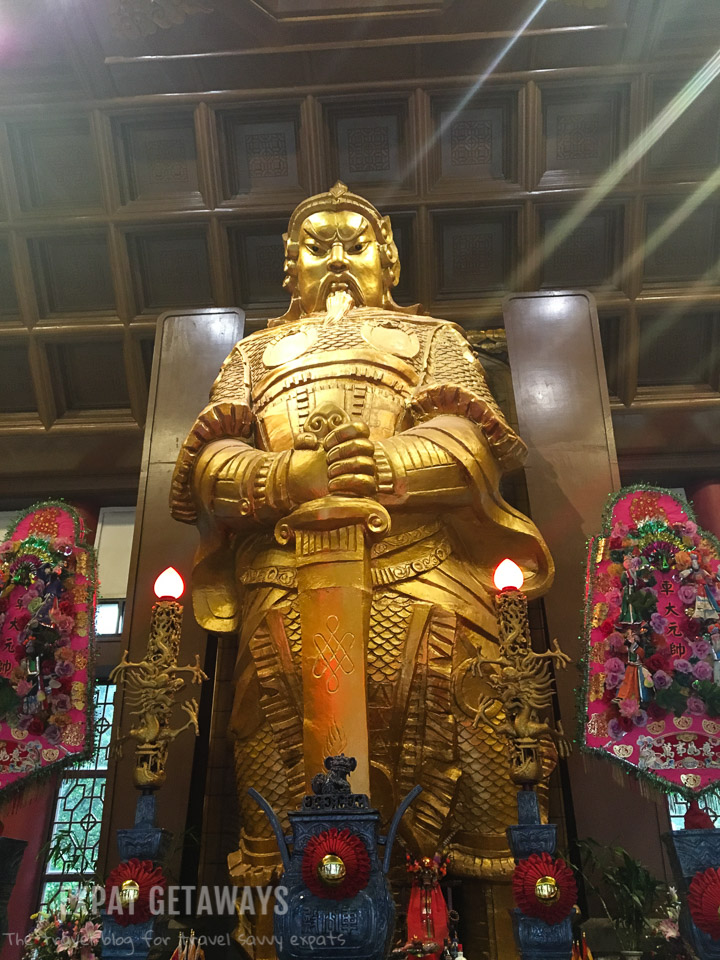
Despite it’s history the Che Kung temple looks quite new. It was rebuilt in 1993, but if you look out the back you can see the remenants of the original temple.
If you spin the wheel of fortune three times you will have good luck. On the second day of Chinese New Year people pack in for their turn wishing for luck in the year ahead. Funnily enough this coincides with the very popular Sha Tin horse races so you will see punters asking for Che Kung’s help for their day at the races!
Che Kung Temple
Exit B Tai Wai MTR (light blue line) or Exit B Che Kung Temple MTR (light green line)
You will probably visit Tin Hau Temple on your trip to Stanley
Tin Hau is one of the most popular deities in Hong Kong. With a maritime history and many fishing villages it’s not surprising that the Goddess of the Sea is so popular.
Stanley is a lovely seaside village and popular with tourists who want to visit the beach, the markets and the historic Murray House. It seems fitting to pop your head into the local Tin Hau temple as well.
Even though the temple was built in 1767 there have been extensive renovations over the years. Intriguingly there is a large tiger skin hanging on the wall was shot outside the Stanley Police Station in 1942.
But make time for the Pak Tai Temple hidden just around the corner
Standing with the Tin Hau Temple behind you, looking towards the water, you will see Murray House – the old army barracks that were relocated from Central to Stanley. If you walk to the water and follow the path around to the right you will weave your way through the trees and around the headland to the little Pak Tai Temple built into the side of the mountain.
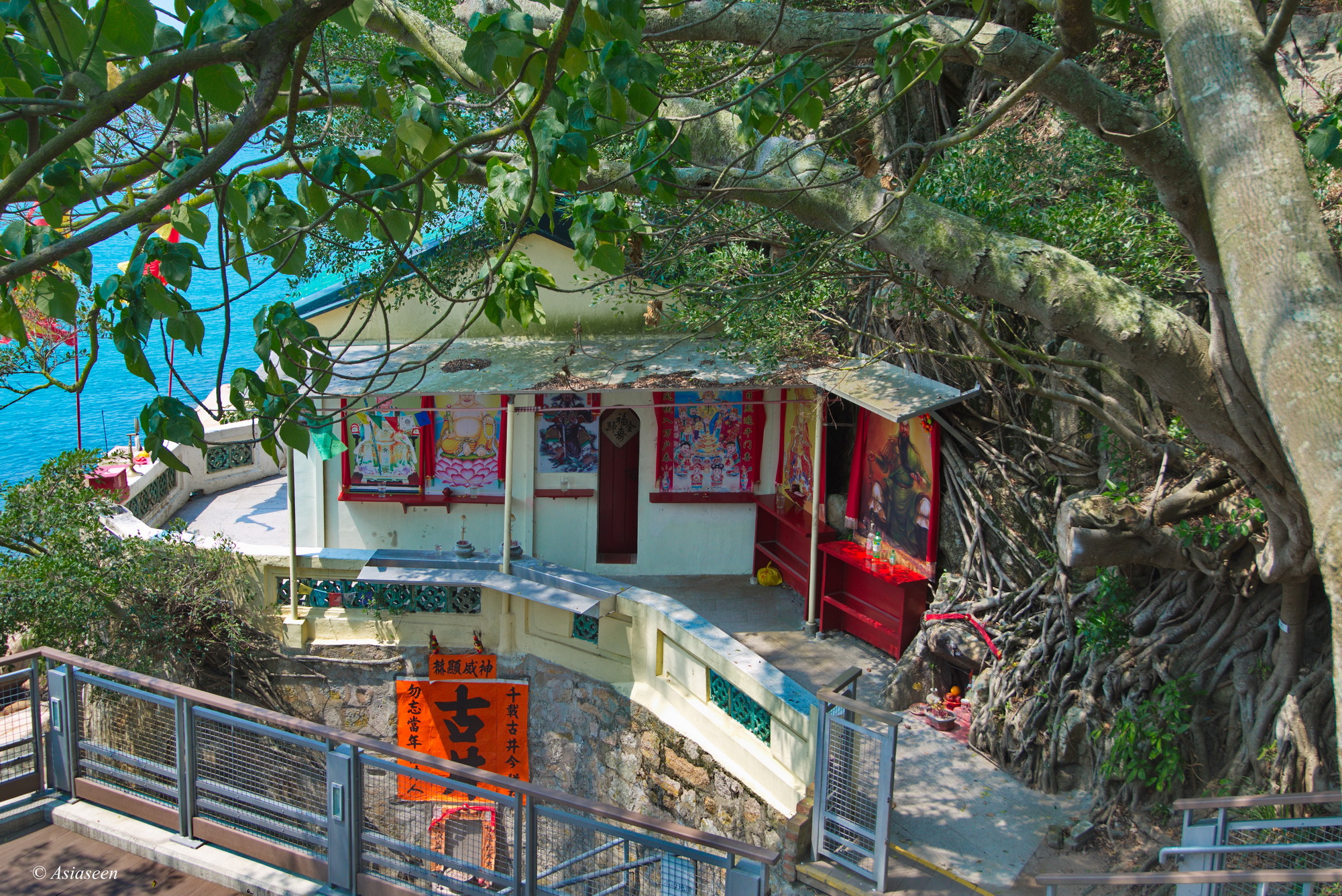
Back in 1805 Stanley was a little fishing village called Chek Chue or “Bandit’s Post”. The waters surrounding Hong Kong were notorious for pirates and one of the most famous was Cheng Po Tsai or “Cheng Po the kid”. Cheng Po Tsai hid his treasures all over Hong Kong and it is said there was a tunnel leading from the back of the Pak Tai Temple to one of his hoards.
Other Interesting Temples to make time for in Hong Kong
Kwun Yam Temple, Hung Hom
By Virginia Chan – The Smoo Diaries
Kwun Yam or Guan Yin is the Goddess of Mercy- the same goddess at the statue at Tsz Shan Monastery.
This Kwun Yam temple is the most popular because it is believed to be the most auspicious of them all. It is said that during World War 2, when the Japanese were heavily bombing the nearby Whampoa Dock & its surrounding area, those that sought shelter at the Kwun Yam Temple were unharmed and the Kwun Yam Temple itself was unscathed as well.
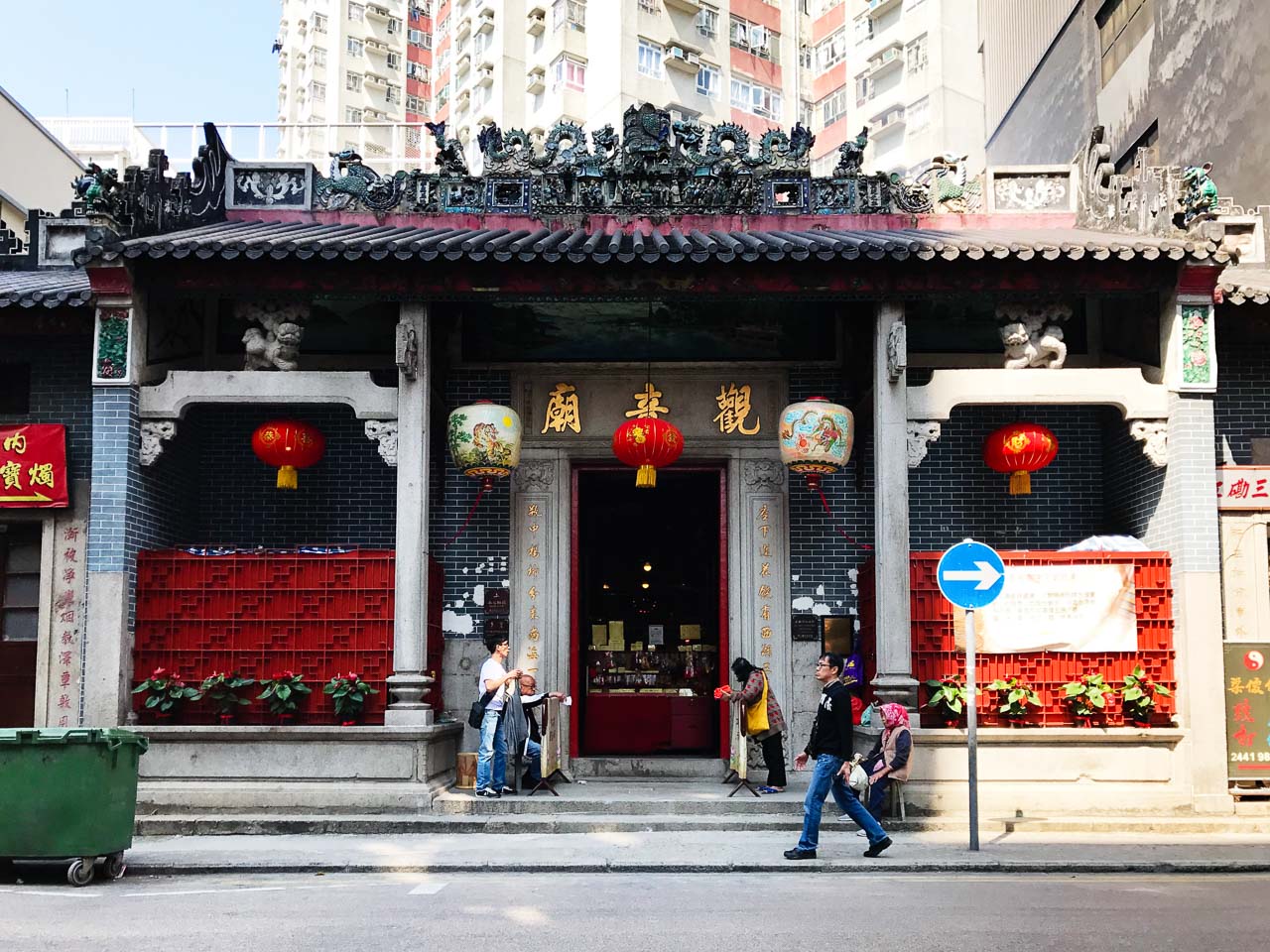
The most popular time, and perhaps one of the most interesting times to visit the Kwun Yam Temple is during the 26th day of the first lunar month as this is when the Kwun Yam opens her treasury vault for 3 days and you can ”borrow money“ from the Kwun Yam.
It’s not real money that you are borrowing, but it is the auspicious meaning that the worshippers are hoping for. Those that want to be first in line to borrow money from the Kwun Yam will queue upwards to 40 hours outside the temple. Over a thousand people will queue and visit the temple during the the first few hours of the “treasury vault” being opened.
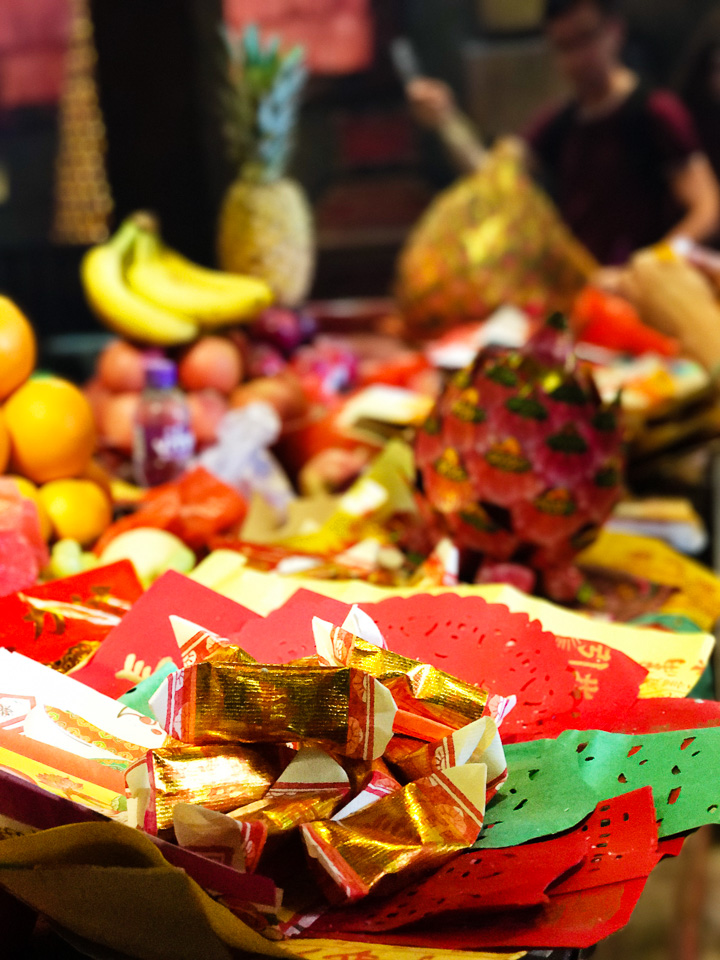
Of course, those that come to “borrow money” from the Kwun Yam will have to “return the money” in the form of an offering before the next lunar year.
For more on “borrowing money” click here.
Pak Tai Temple, Wan Chai
Pak Tai is worshiped for his power, courage and devotion and also known as the God of the North. He defeated the Demon King and his tortoise and serpent over 3,000 years ago. Pak Tai shows that righteousness will always win over evil and he’ll often appear clad in golden armour, barefoot and stepping triumphantly on a tortoise and serpent.
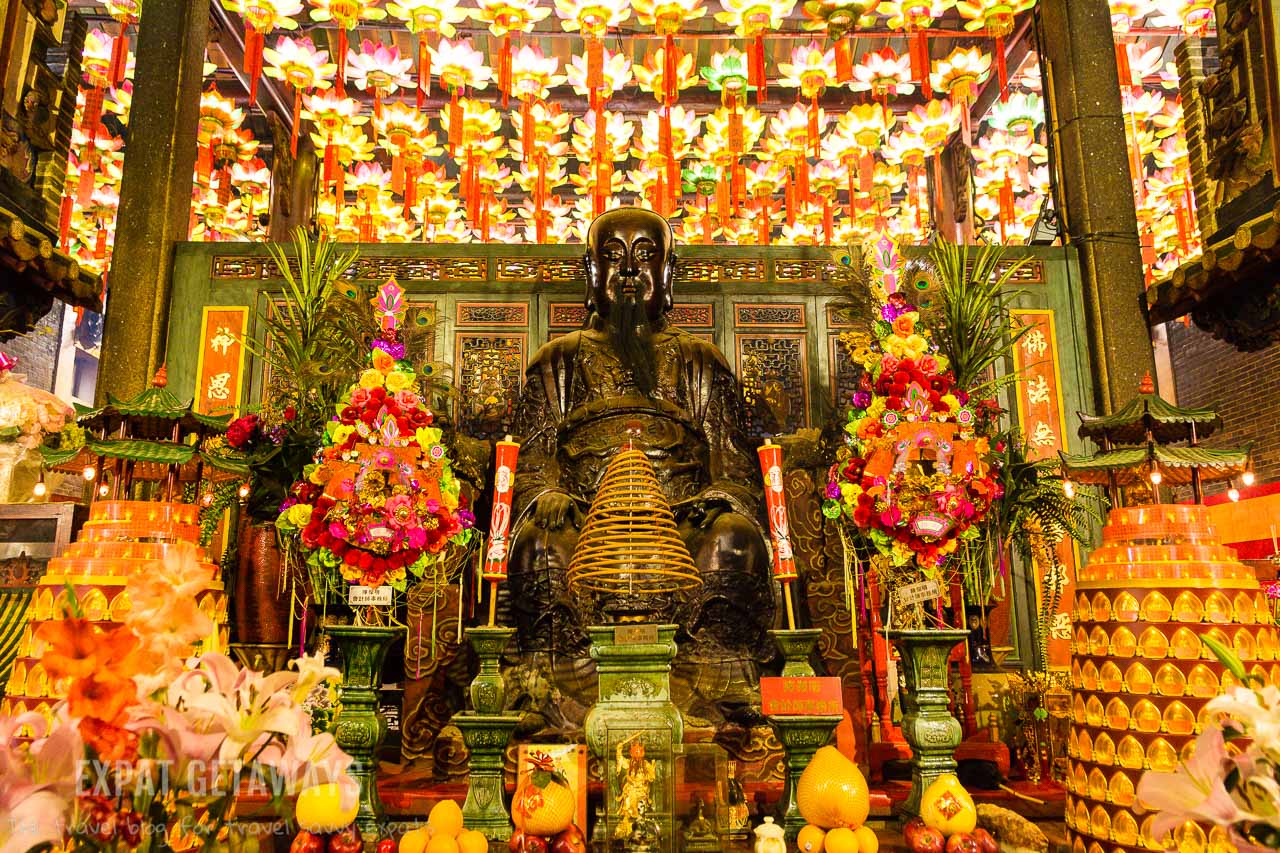
This Pak Tai temple was built in the 1860s and is the biggest on Hong Kong Island. Paper offerings are incinerated during funeral offerings, the Grave Sweeping festival and around the Hungry Ghost festival. Take the time as you Explore Wan Chai to follow the incense to this hidden gem.
Photographs
Almost all photography is courtesy of my lovely husband over at Andrew Mizzi Photography. Be sure to check out his website for info on his camera kit, to purchase prints and of course more stunning photographs from this trip and our travels around the world.
Love it? Pin it!
